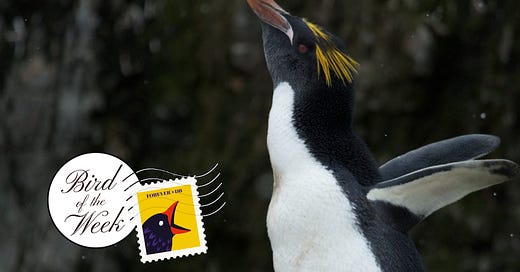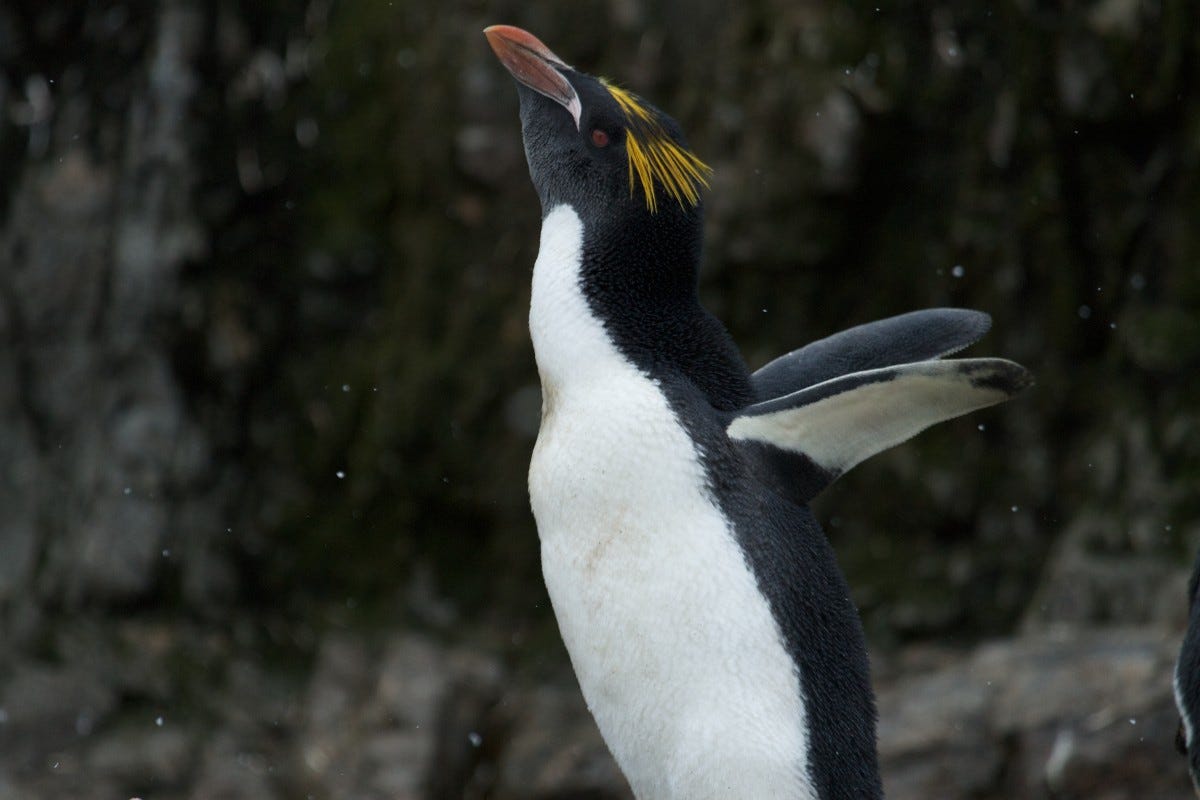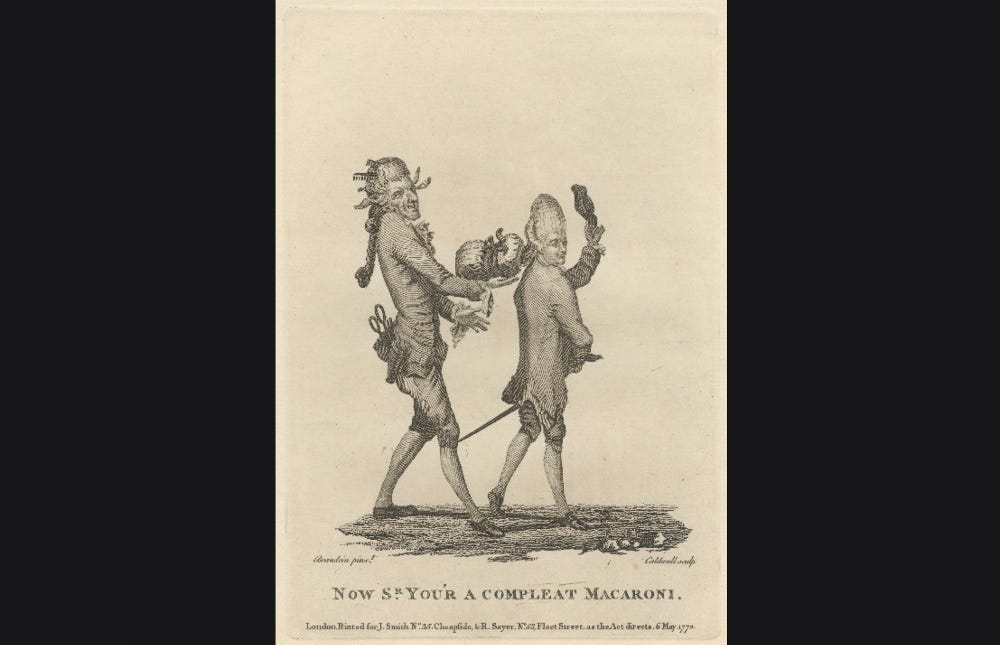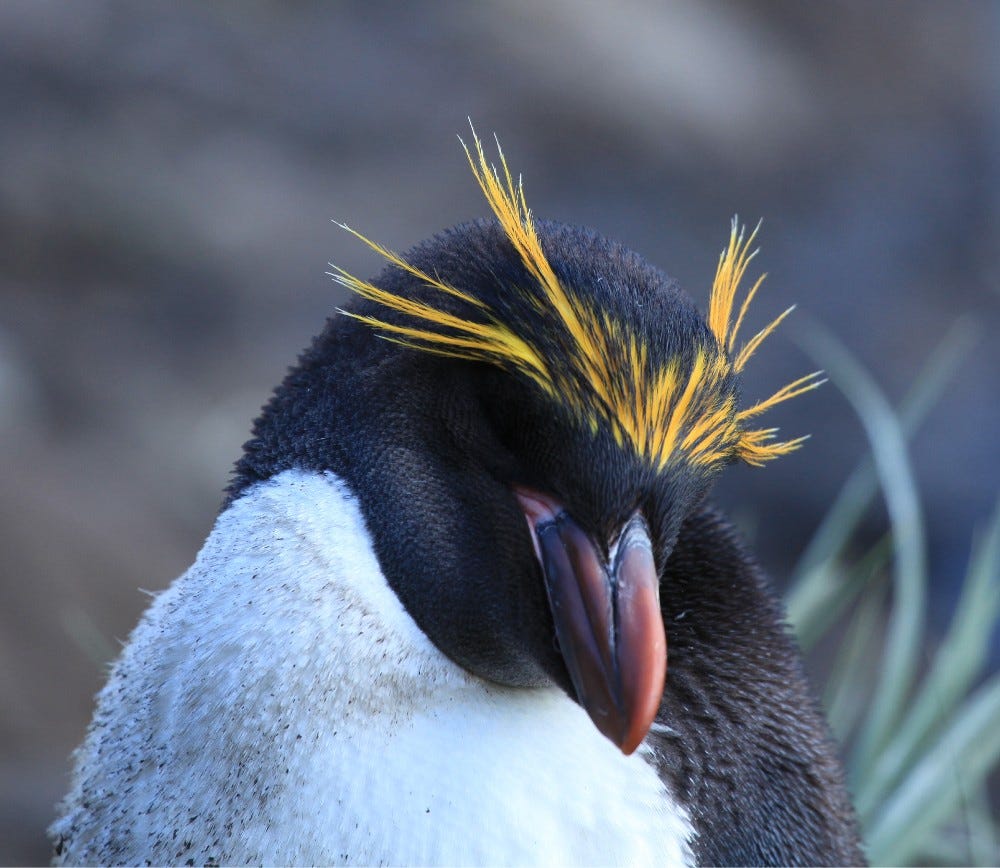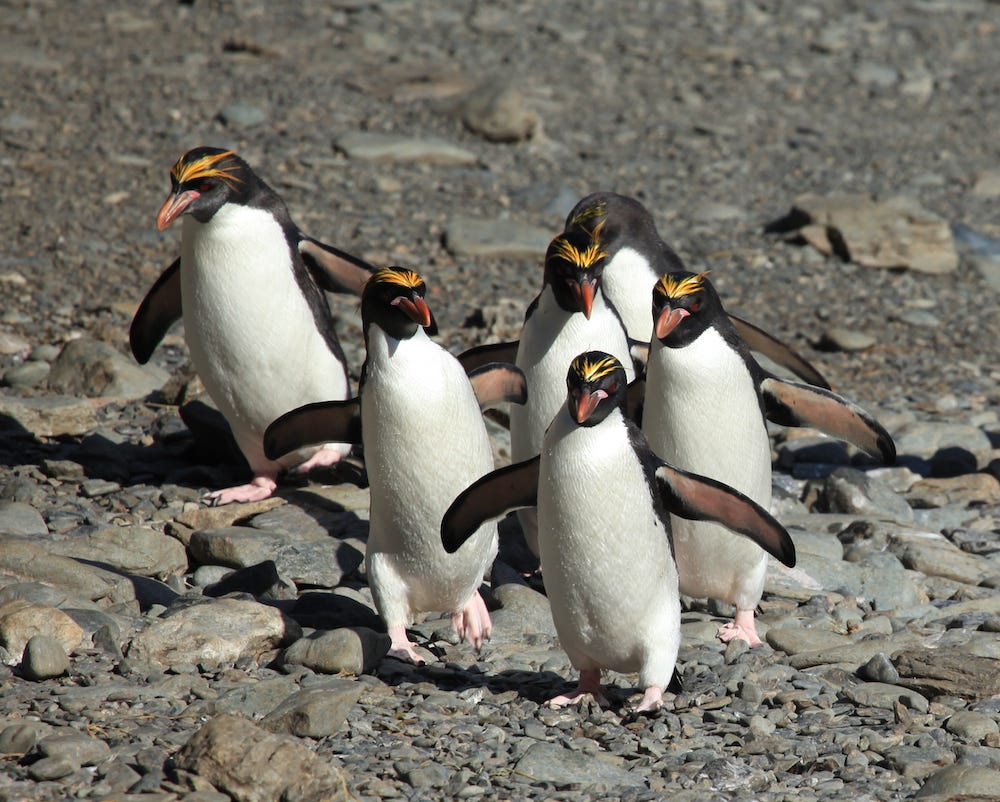Recently, Jews all over the world observed Yom Kippur, the day of atonement where you fast and repent for all of the bad things you’ve done over the past year.
Well, some Jews. I forgot Yom Kippur was even happening until like halfway through the day. What can I say, it’s not at the top of my priorities list. Or, like, the middle, or the end.
But that means that I have been robbed of a forum in which to atone for my sins. Luckily, I have Bird of the Week. So it is with a penitent heart that I confess to you, beloved bird family, my biggest sin: we have never had a post dedicated to a penguin in Bird of the Week.1
I know you’re probably reeling right now. But we have to move forward and see if we can overcome this. And the healing starts now, with one of the most awesome penguins of all time: the macaroni penguin.
POW! VRONK! FLRBBBBB! (Thank you to this website of Batman fighting words for providing those terms.) This is an avian sock right to the solar plexus, a knockout punch of majestic delirium. The macaroni penguin is the exact combination of regal and ridiculous that we love around here. Incidentally, the name is not because its feathers resemble noodles. It’s reportedly because back in the day, British sailors decided that its flamboyant look reminded them of the style favored by 18th-century dandies called “macaronis.” Here’s what they looked like, apparently:
And yes, if you were wondering, there was a lot of anti-queer nonsense swirling around this trend. From Atlas Obscura:
That macaronis emulated many facets of female dress did not escape the notice of English commentators, who variously referred to macaronis as “that doubtful gender,” “hermaphrodites,” and “amphibious creatures.”
One song described a macaroni as thus: “His taper waist, so strait and long, / His spindle shanks, like pitchfork prong, / To what sex does the thing belong? / ’Tis call’d a Macaroni.”
Why am I including all this? First because it’s interesting, and secondly because it confirms that the macaroni penguin is a queer icon! Which, I know, penguins are one of the gayest animals around already, but this just adds another layer to the tale.
Anyway. Let’s take another look or two.
This, folks, this is what it’s all about.
Now, when you think “penguin,” you probably think of the emperor penguin, which is of course an icon. But macaroni penguins are actually the most common penguins on earth. You can find them in chilly places ranging from the tip of South America to Antarctica and all the way over to the edge of southern Africa.
Macaroni penguins swim around for much of the year, subsisting almost entirely on massive quantities of krill. But when they come ashore to breed, they form mega-colonies, clustering in the hundreds of thousands. The British Antarctic Survey calls them “very colonial,” which, you would, imperialist dogs! They just like each other’s company.
Here is a David Attenborough video where you can not only see how dense these colonies are but also hear how loud the macaroni penguin is. Sir David’s gotta yell at the top of his lungs to be heard.
You can also see how, even though these birds reside in the coldest places on the planet, they have NO chill. They are fighting all the time!
They are also trying to, ahem, start a family all the time. Here is a video of what’s known as the “ecstatic display” which the males use to attract the females. Lotta head action. According to the University of Michigan, when one boy penguin does this, it “can result in a mass trumpeting by other males, which is believed to help synchronize the breeding cycle.” Nature is wild.
Macaroni child-rearing is also a lot. From the American Bird Conservancy:
Female Macaroni Penguins lay two eggs, which are incubated by both the male and female for 33 to 40 days, with each shift lasting a week to 12 days. Strangely enough, the first egg is always smaller and is usually rejected once the larger second egg is laid. The reasons for this extreme form of brood reduction are unclear; researchers theorize that the first, smaller egg is an "insurance policy" against the failure to lay a second. In any case, only one chick usually ends up being raised. After they hatch, the downy young hang around in groups called creches for a bit longer than three weeks.
And before you ask, yes, of course I will show you what the chicks look like. They grow really quickly!
I just adore this bird. What’s not to love? I bet you know what’s coming…
Yep, just like basically every other animal on this godforsaken rock (except humans), the macaroni’s numbers have plummeted over the past few decades; in 2016, the Pew Charitable Trust estimated that “in the past 36 years, the global macaroni population has declined considerably, from 9 million to 6.3 million pairs.” It’s undoubtedly worse now. No wonder macaronis are listed as vulnerable to extinction. The culprits are the ones you’d expect: climate change and overfishing, both of which are causing severe disruption to the food the macaronis rely on to live. Thanks for that, humanity!
I don’t want to end on a total downer note, so here is a short video of some macaroni penguins taking laps in a little pool.
They’re perfect, just perfect. A reminder: you can check out our complete Bird of the Week list here, and get in touch with your bird suggestions at hello@discourseblog.com.
We spotlighted a little blue penguin as part of our very first Bird of the Week blog (thanks to reader Meave Gallagher for submitting it and being much more proactive on the penguin front than we turned out to be) but no penguin has ever had a solo post before.


